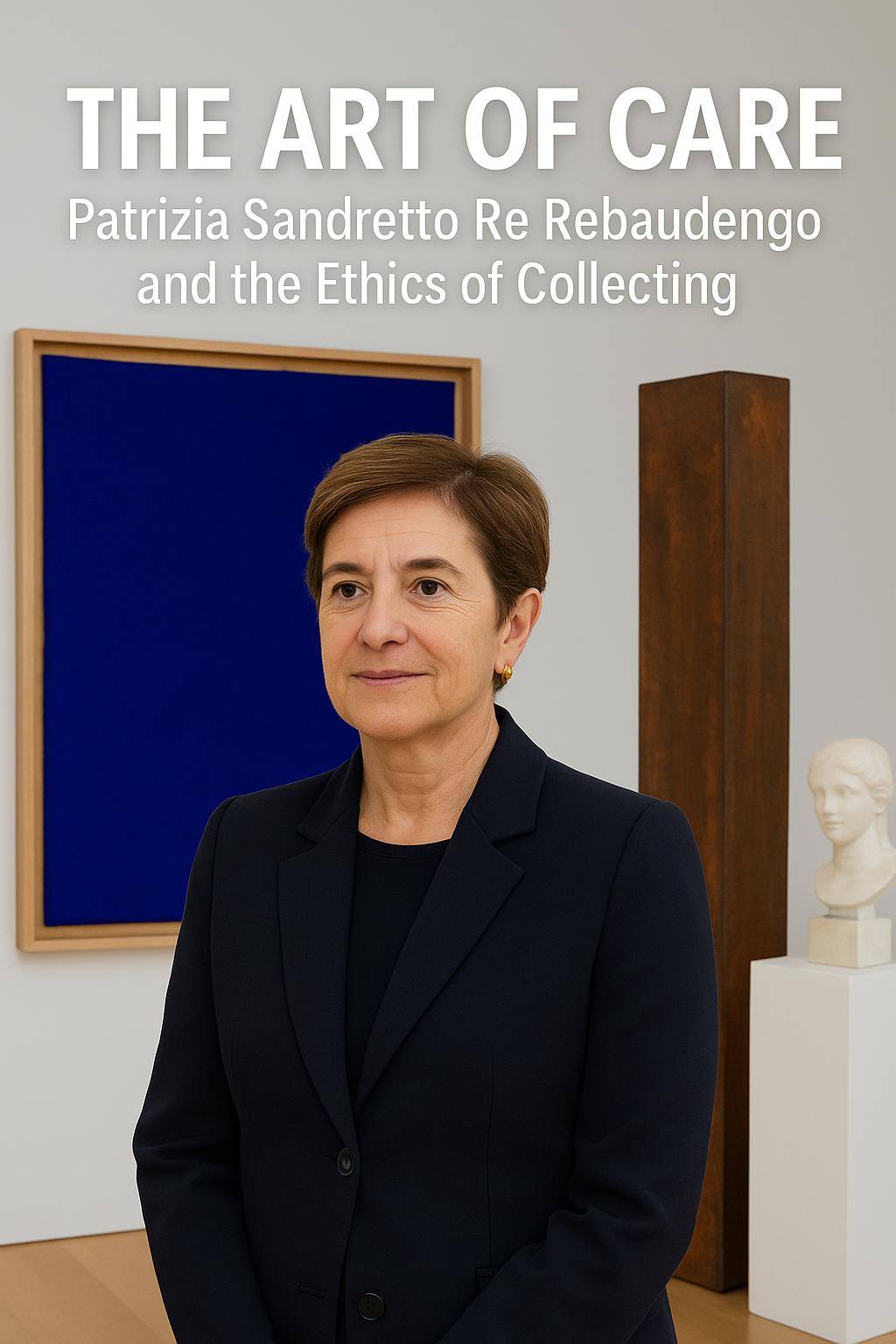The Art of Care: Patrizia Sandretto Re Rebaudengo and the Ethics of Collecting
Far beyond acquisition, Patrizia Sandretto Re Rebaudengo redefines collecting as a cultural, ethical, and visionary practice—where art becomes dialogue, presence, and shared responsibility.
COLLECTORS OF MEANING: WHEN ART BECOMES A RESPONSIBILITY
Charlotte Madeleine CASTELLI
7/22/20252 min read


Collecting as a Cultural, Ethical, and Visionary Act
In a contemporary art landscape marked by relentless acceleration, market speculation, and the glare of hyper-visibility, the figure of the collector is being reimagined in radically new terms: against this backdrop, Patrizia Sandretto Re Rebaudengo stands as a singular figure—an exemplar of how collecting can transcend its private dimension to become a public, ethical, and curatorial practice. Her trajectory is not that of a patron in the traditional sense, but of a cultural agent: one who listens, constructs, and catalyzes.
Born in Turin, with a background in economics and an instinctive sensitivity to the nuances of contemporaneity, Sandretto Re Rebaudengo began her collection in the early 1990s. From the outset, her gaze turned toward emerging artists and experimental languages, with a marked attention to international contexts. Her collection is not an archive of trophies, but a living ecosystem—an ensemble of encounters, dialogues, and shared visions. Rather than aspiring to encyclopedic representation, her approach privileges depth, resonance, and the capacity of art to generate meaning over time.
In 1995, she established the Fondazione Sandretto Re Rebaudengo, first housed in a historical villa on the hills of Turin, and since 2002 located in a converted industrial space in the heart of the city. The foundation anticipated many of the concerns that would later become central to contemporary curatorial discourse: the production of new work, site-specific commissions, critical pedagogy, and the fostering of transdisciplinary dialogue. It is not merely an exhibition venue, but a cultural laboratory, where artistic processes are supported with intellectual rigor and structural care.
One of the most forward-thinking aspects of her work is her commitment to curatorial education. Since 2007, the foundation has hosted the Young Curators Residency Programme, which invites emerging curators from across the globe to spend three months immersed in the Italian art scene. Far from a passive residency, it is a research-driven project that fosters proximity, slow engagement, and an intimate knowledge of local ecologies.
In recent years, Sandretto Re Rebaudengo’s vision has expanded beyond institutional walls, embracing geographies imbued with symbolic and ecological significance. In 2018, the Italian government entrusted the foundation with the Island of San Giacomo in Paludo, in the Venetian lagoon. Rather than transforming it into a conventional exhibition site, she envisions it as a space for reflection, artistic residencies, and environmental dialogue—a retreat for artists, thinkers, and communities, where time is reclaimed and the act of creation is re-rooted in landscape, silence, and shared experience.
At the core of her practice lies the idea of the collector as mediator, not owner; as caretaker, not consumer. Her collection is not a static repository but a generative field, activating questions rather than cementing answers. Where others accumulate, she builds relations. Where others preserve, she ignites. Her influence extends across major international institutions—she serves on the boards of the Serpentine Galleries in London, the New Museum in New York, and Tate Modern, among others—but her legacy is not one of prestige. It is one of cultural authorship, sustained over decades by a radical ethics of engagement and responsibility.
Now, when collecting is often reduced to a performance of wealth or a mechanism of speculation, Patrizia Sandretto Re Rebaudengo reclaims its most profound potential: to build cultural infrastructures, to nurture artistic research, and to foster forms of collective imagination. In her hands, art is not an object to be owned, but a language to be shared, a place to inhabit, a time to care for—together.
© Charlotte Madeleine Castelli | All rights reserved
